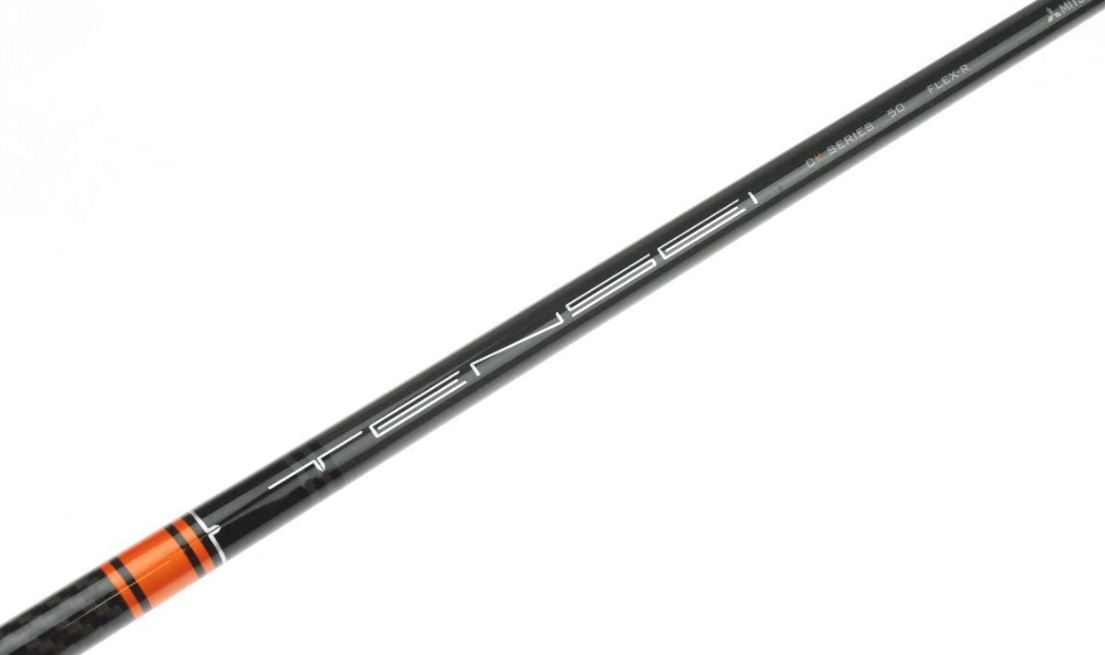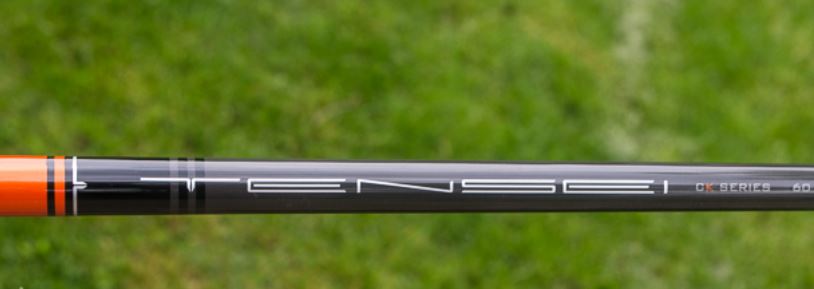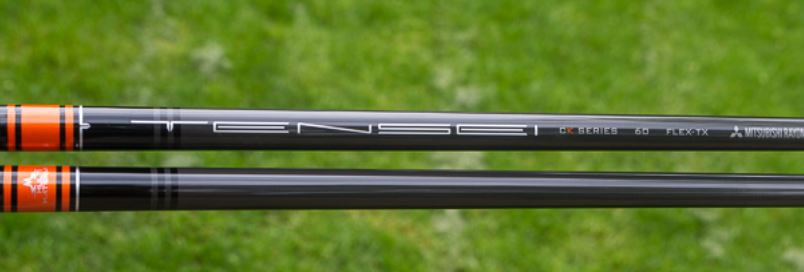Mitsubishi Tensei Orange Shaft Review – Specs, Flex, Weight

If you’re looking for a new driver shaft, Mitsubishi is a great brand to start your shopping with.
We’re not going to pretend that we know all about the fancy tech that goes into their shafts. But we will say that every season, they produce shafts that feel incredibly smooth.
One such shaft is the Mitsubishi Tensei Orange. The Tensei series is known for incorporating advanced prepreg to produce unique but consistently smooth bend profiles.
The Tensei Orange is one of the latest entries into the Tensei family. It’s a given that this shaft feels smooth; but what else does it bring to the table? Let’s find out.
Mitsubishi Tensei Orange Shaft Overview
The first thing you have to know about the Mitsubishi Tensei Orange is that it is a counter-weighted shaft.
When a shaft is counter weighted, the swing weight of the club is effectively lowered. You typically see this in longer shafts because a counter-weighted shaft will be easier to swing.
The Mitsubishi Tensei Orange is indeed easy to swing. You can feel the action in the midsection but the stiff tip keeps the head in check.
We were getting really good and consistent club head speeds during our testing session.
The Mitsubishi Tensei Orange has the stiffest tip section of the entire Tensei series which includes the Tensei Blue, Tensei Red and Tensei White shafts.
However, even though it’s counter-weighted (the extra mass goes in the butt section) the Mitsubishi Tensei Orange has the softest butt profile of the entire Tensei family.
The softer butt makes for excellent club head speeds and smash factor. The stiffness is essentially progressive: softest in the butt, tightening up a bit in the midsection and getting super-stiff in the tip.
The progressive stiffness makes for very efficient swing energy transfer to the ball. It also produces a decadently smooth transition.
Why is the Mitsubishi Tensei Orange So Popular?

Even if you don’t understand all the tech that goes into these shafts, you know you are getting excellent quality from Mitsubishi.
In particular, the Mitsubishi Tensei Orange is a popular choice because it is a versatile shaft. It works well with both a deliberate and aggressive tempo.
While not everyone is a fan of the feel of counter-weighted shafts, the Mitsubishi Tensei Orange does a good job of not going overboard with the counter-weighting feel.
How Does the Mitsubishi Tensei Orange Perform?
One thing that surprised us about the performance of the Mitsubishi Tensei Orange shaft is that it produced relatively low spin rates.
This surprised us because we would describe the Mitsubishi Tensei Orange as an “active” shaft. What we mean is that you can feel a clear kick in the midsection.
And usually, with an active shaft, you get high spin rates.
But the Mitsubishi Tensei Orange shaft consistently produced sub 2000 RPM spin rates. What makes that even more remarkable is that this is a fairly high launching shaft.
We would say the trajectory is mid-high with the ability to flight down. We would also say that the Mitsubishi Tensei Orange gets the best distance from an aggressive tempo.
This was a shaft that was designed for powerful swingers; but less aggressive swingers can still certainly get good use out of it.
The dispersion was also fairly tight. While the Mitsubishi Tensei Orange won’t cover up grievous mis-hits, it will do a good job of keeping you out of the trees as long as you’re moderately accurate.
The counter-weighting of the Mitsubishi Tensei Orange also helped most of our testers with consistency. Their strike patterns were getting more uniform with every swing of this shaft.
Mitsubishi Tensei Orange Shaft Specs
| Specs | Mitsubishi Tensei Orange |
| Available flexes | Regular, Stiff, Tour Extra Stiff |
| Weight | 54g – 95g |
| Butt | .602”, .606”, .608”, .610”, .598”, .596” |
| Tip | 3.0” |
| Length | 46” |
What Flexes Are Available? What Swing Speeds Do They Suit?
Tour Extra Stiff is only for powerful, 100+ MPH swingers.
For the rest of us there’s regular and stiff which should cover the 85-99 MPH swing speed range.
What Weights Are Available? What Swing Speeds Do They Suit?
The Mitsubishi Tensei Orange comes in five weight classes: 50g, 60g, 70g, 80g and 90g.
The 50 and 60 gram class is for players in the 80-89 MPH range. 70g and 80g would probably suit 90-99 MPH swingers. 90g is for 105+ MPH swingers.
Why is it So Good?
The Mitsubishi Tensei Orange does a great job of transferring nearly all of your swing energy.
You get the feeling that nothing is lost and the ball is receiving all of your punishment.
Mitsubishi Tensei Orange First Impressions

Aside from the orange band in the middle, we really liked the looks of this shaft.
You can see the carbon fiber/kevlar weave in the butt section which looks really cool.
Key Features & Performance
The Mitsubishi Tensei Orange is made of 40 ton carbon fiber prepreg.
This is what makes the tip so stiff. As such, you get really good club head control. At no point in our testing did we feel that we lost the club head on the downswing.
Mitsubishi Tensei Orange Driver Review Review
Our testers were averaging a drive distance of 271.8 yards after three swings each.
Carry distance was consistently in the high 250 yard range with this shaft.
Mitsubishi Tensei Orange Fairway Wood Review
We saw spin rates tick up a bit with the fairway woods.
However, our shot dispersion tightened up.
Mitsubishi Tensei Orange Pros & Cons

Pros:
- Relatively low spin
- Active midsection
- Smooth transition
- Works with deliberate and aggressive tempos
- Consistent feel
- Consistent flight
Cons:
- On the pricey side
Overall Score: 97/100
Check Out More Reviews Here:
Who Should Buy it?
If you simply want a better-feeling, more efficient shaft, then you can game the Mitsubishi Tensei Orange regardless of your swing speed.
The Mitsubishi Tensei Orange works optimally with fast swing speeds and fast tempos though. That’s when you’ll see 260+ yard carry distances.




